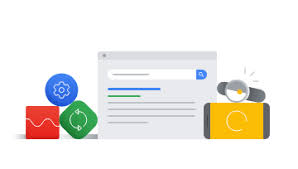
How to Protect Your Privacy While Using AI Tools: 5 Important Tips
In an era where artificial intelligence (AI) is becoming essential part of our lives, from chatbots and virtual assistants to AI-driven analytics, protecting your privacy is more important than ever. While AI tools offer incredible convenience and efficiency, they often involve collecting and processing your personal data. If not handled vigilant, this could put your privacy at risk.
Here are five practical tips to help you safeguard your privacy while using AI tools.
1. Be Mindful of the Information You Share

One of the simplest yet most effective ways to protect your privacy is by being selective about the data you provide. Avoid sharing sensitive information such as financial details, passwords, or personal identifiers unless absolutely necessary.
For example, if you’re using an AI-powered chatbot or virtual assistant, think twice before providing your full name, address, or other personal details. If a tool doesn't specific require such information to function, keep it to yourself.
2. Review Privacy Policies and Permissions

Before using any AI tool, take the time to read its privacy policy and terms of service. These documents outline how your data will be collected, stored, and shared. Look for red flags, such as blurred descriptions of data usage or permissions that seem excessive.
In addition, regularly review app permissions on your devices. Many AI tools request access to your microphone, camera, location, and more. Only grant permissions that are essential for the tool's functionality, and cancel unnecessary ones.
3. Use Tools with Strong Encryption and Security Measures

Choose AI platforms and tools that prioritize data security. Encryption is a key feature to look for, as it ensures that your data is converted into a secure code, making it difficult for unauthorized parties to access.
If you're using AI services for communication or file sharing, opt for tools that offer end-to-end encryption. This means your data is encrypted from the moment it leaves your device until it reaches its destination.
4. Utilize Privacy Settings and Features

Many AI tools provide built-in privacy settings to give users more control over their data. Familiarize yourself with these features and adjust them according to your preferences.
For example, some tools allow you to delete stored conversations, opt out of data sharing for training AI models, or control which data is maintained. Take advantage of these options to limit display your data.
5. Stay Informed and Use Trusted Sources

AI technology develop rapidly, and staying informed about the latest developments is difficult. Be aware of potential risks, such as trickey scams pretended to be as AI tools or malicious software that claims to be legitimate.
Always download AI tools and apps from trusted sources, such as official app stores or the developer’s verified website. Avoid third-party platforms that may offer modified or counterfeit versions of popular tools, as they could compromise your data.
Conclusion

While AI tools are reshaping the way we live and work, they also present privacy challenges that must be addressed proactively. By being cautious with your information, reviewing privacy policies, choosing secure platforms, utilizing privacy features, and staying informed, you can enjoy the benefits of AI without compromising your personal data.
Remember, privacy is not just a right—it’s a responsibility. Take these steps to protect yourself and use AI tools safely and confidently in today’s digital landscape.
Follow Us
Trending News
Newsletter
Aliqu justo et labore at eirmod justo sea erat diam dolor diam vero kasd



